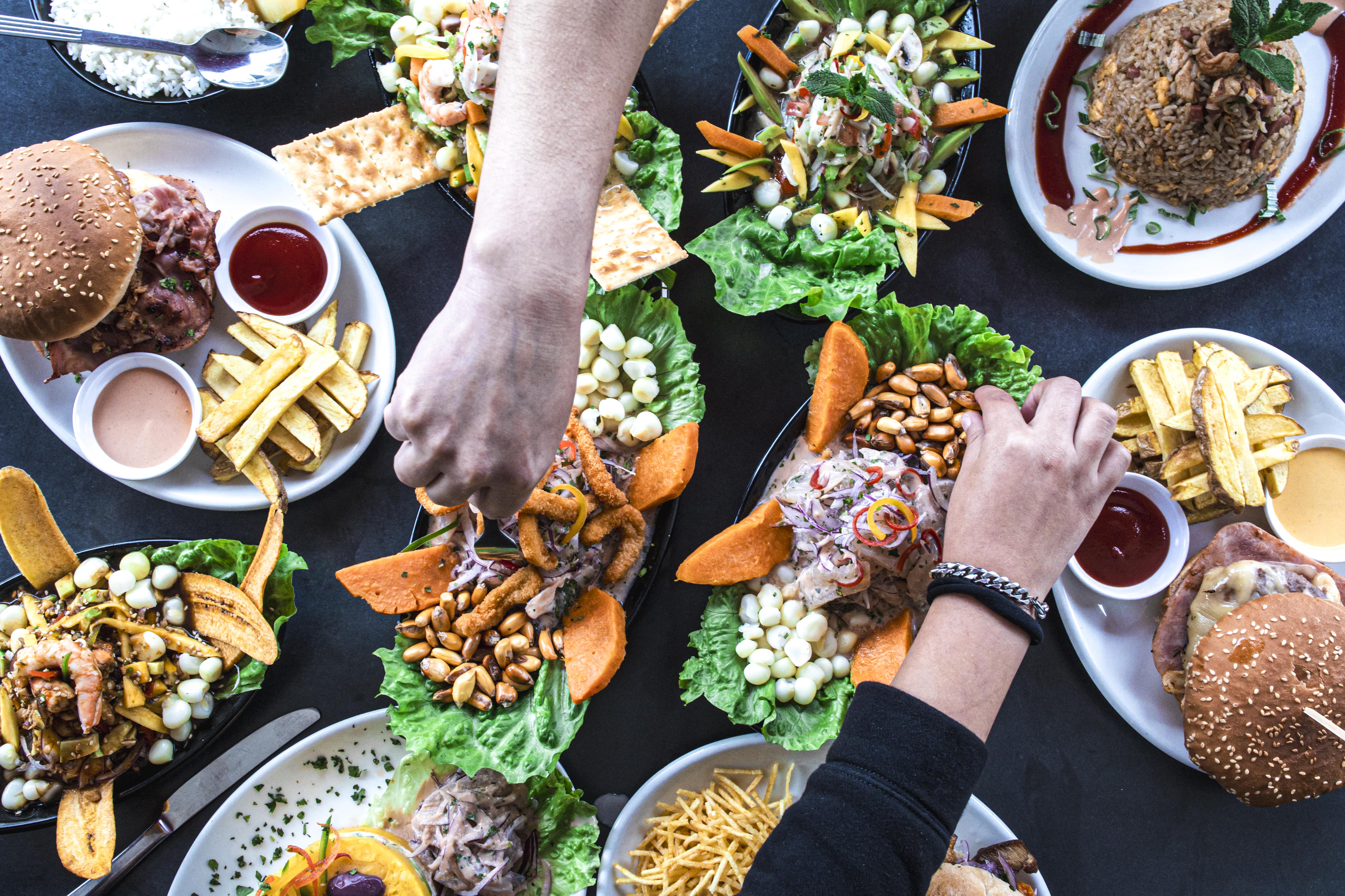Key Takeaways
- Fall appetite changes are biologically normal, driven by hormones, shorter days, and shifts in the circadian rhythm.
- Protein, fiber, sleep, hydration, and stress management help balance hunger hormones and regulate blood sugar levels.
- Utilize real-time glucose tracking (like Signos) to pinpoint your individual hunger triggers and maintain a steady metabolism throughout the season.
{{mid-cta}}
If you’re experiencing stronger cravings as the temperature drops, you’re not alone. Beyond the cultural idea of “comfort food season,” there are actually biological reasons why you feel hungrier this time of year. In the fall, your hormones and circadian rhythms work together to drive an increased appetite. Understanding how leptin, ghrelin, and seasonal shifts affect hunger can help you manage cravings and avoid unwanted weight gain.
The Role of Hunger Hormones

There are two hormones that are primarily responsible for regulating your appetite:
- Leptin signals fullness and energy sufficiency. When leptin is functioning properly, you feel satisfied and don’t experience cravings.
- Ghrelin stimulates hunger and food-seeking behavior, especially when your stomach is empty.
Seasonal changes can disrupt the balance of these hormones. One review examining circannual hormone patterns revealed that leptin levels decrease and ghrelin levels increase in autumn, a mechanism that enables animals to consume sufficient food to endure the colder months. While helpful for animals, this hormonal shift can be problematic in the abundant food environment of our modern world and may lead to excess weight gain.1
Ghrelin levels have been strongly correlated with food intake, demonstrating that our behavior is strongly tied to our hormones. The rise and fall of ghrelin directly influence not only our caloric intake, but also play a role in fat storage. This may be why many people struggle with weight management despite their best intentions.2
Additionally, shifts in leptin sensitivity can affect how well your brain perceives fullness, especially as cold weather approaches. One experiment in animals showed that seasonal and nutritional changes influenced the concentration of leptin receptors. Fewer receptors can cause leptin resistance, which is associated with overweight and obesity in both animals and humans.3
Circadian Rhythm and Seasonal Appetite Shifts

Your internal clock, also known as your circadian rhythm, regulates biological processes such as hormone secretion, sleep, and metabolism. During the fall months, the decrease in daylight and earlier sunsets alter these rhythms.
Like ghrelin and leptin, melatonin is another hormone that affects our metabolism. While best known for promoting sleep, melatonin is also involved in regulating energy expenditure and has been shown to be protective against weight gain.4
Our bodies naturally release melatonin in the evenings, but this process is disrupted by exposure to bright light. In an ideal world, we would go to bed earlier during the colder, darker months to keep our circadian rhythms in sync. Instead, we turn on lights earlier, which can disrupt the production of melatonin. Reduced melatonin levels are associated with lower leptin levels, leading to increased food intake and carbohydrate cravings. Additionally, low levels of melatonin can cause insulin resistance.5
These hormonal fluctuations can help explain why you feel more drawn to comfort foods and larger portions as the season changes and days get shorter.
Why Fall Fuels Cravings and Hunger

There are multiple reasons why we feel hungrier during the fall and winter months:
Evolutionary Drivers
Thousands of years ago, increased energy intake before winter was protective. Today, those instincts still trigger increased hunger and prompt us to eat more carbohydrates at this time of year. This caloric surplus is one of the reasons people tend to gain weight in cooler weather.
Warm, Carby-Heavy Comfort Foods
Fall brings soups, stews, casseroles, and rich foods, which drive up your calorie intake. These higher-carb meals can temporarily spike serotonin and create a sense of comfort (even though they inevitably cause blood sugar dips and perpetuate the hunger cycle).
Cultural & Social Cues
Holiday dinners and social gatherings can also contribute to unwanted weight gain. October through December is often referred to as the “sugar season” because we are bombarded with seasonal treats at every turn. While socializing has been shown to have positive effects on your health, it’s essential to be mindful of the foods you consume so you don’t overindulge.
Spotting Hormone-Driven Hunger vs. Habit Cravings

Not all cravings reflect what your body needs; some of these urges are psychological or habitual.
Here’s how to tell the difference:
- True hunger builds gradually, feels physical, and can be satisfied with a balanced meal containing protein, fiber, and healthy fats.
- Cravings strike sharply (e.g., the 3 p.m. slump), are often tied to specific times or emotions, and frequently target particular foods (such as cookies, chips, or sweets).
Glucose variability can significantly impact cravings. If your blood sugar drops significantly after a meal or snack, your body may interpret this decline as hunger, even though you’ve eaten enough already. Using a continuous glucose monitor (CGM) can help you understand your blood sugar patterns and differentiate between hormone-driven cravings and true hunger.
The Metabolic Playbook: Managing Appetite in Fall

You can’t stop the seasons, but you can work with them. Here’s your playbook for managing cravings and staying in metabolic balance.
Nutrition: Protein + Fiber + Smart Carbs
- Anchor meals with healthy protein (eggs, chicken, fish) and fiber-rich veggies or whole grains.
- Combine carbohydrates with fiber and protein to blunt glucose spikes and keep hunger in check.
- In a long-term diet study, high-protein diets led to increased leptin sensitivity and reduced appetite.6
Movement: Keep Leptin Sensitivity High
Physical activity helps maintain leptin signaling and appetite control. Even moderate exercise can improve hormone sensitivity and help prevent weight gain during colder months.7
Sleep & Light Management
Align your sleep schedule with natural light patterns. Use bright light exposure in the morning and dim lights at night to stabilize your circadian rhythm and maintain a healthy ghrelin/leptin balance.
Stress Control
Cortisol, the body’s stress hormone, can exacerbate hunger and cravings, especially for carbs. Incorporate breathing exercises, short walks, or stretching to avoid stress-related eating.
Hydration & Mindful Pauses
Thirst often masquerades as hunger. Drink water before reaching for a snack. Also, implement a 5-minute pause before snacking. You can try asking, “Am I physically hungry, or is this a habit or a craving?”
How Signos Helps Track Seasonal Appetite Shifts

Signos makes the invisible visible by linking your blood sugar patterns to your behaviors:
- Continuous Glucose Monitoring (CGM): See real-time fluctuations after meals, snacks, and activity.
- Context Logging: Record your hunger level, sleep patterns, stress levels, and meal timing to identify your unique triggers.
- Personalized Insights: Over time, Signos can suggest when your appetite is driven by hormones versus habit.
- Trend Analysis: You can track whether your weight gain or appetite patterns shift across the fall and winter seasons, providing you with actionable metabolic feedback.
This data-driven approach helps you stay ahead of cravings, optimizing both your weight and overall health.
The Bottom Line
If your appetite increases in the fall, it’s not just in your head; it’s biologically rooted. Hormonal shifts, circadian disruptions, and other seasonal influences combine to drive hunger and cravings. By employing smart strategies such as balanced nutrition, regular physical activity, consistent sleep, and tools like Signos, you can maintain a metabolically balanced state even as the seasons change.
Learn More With Signos’ Expert Advice
Signos combines cutting-edge research with the proven benefits of continuous glucose monitoring to help you achieve your health goals. Check out more articles on the Signos blog.
Topics discussed in this article:
References
- Cahill S, Tuplin E, Holahan MR. Circannual changes in stress and feeding hormones and their effect on food-seeking behaviors. Front Neurosci. 2013;7:140. Published 2013 Aug 7. doi:10.3389/fnins.2013.00140
- Smith A, Woodside B, Abizaid A. Ghrelin and the Control of Energy Balance in Females. Front Endocrinol (Lausanne). 2022;13:904754. doi:10.3389/fendo.2022.904754.
- Seasonal and nutritional changes in the short form of the leptin receptor expression and VEGF system in the choroid plexus, arcuate nucleus, and anterior pituitary in MTS-leptin and resistin-treated sheep. Front Neurosci. 2023;17:1291997. doi:10.3389/fnins.2023.1291997.
- Srinivasan V, Pandi-Perumal SR, Spence DW, Trakht I, Brown GM. Melatonin, energy metabolism, and obesity: a review. J Pineal Res. 2014;56(4):371-381. doi:10.1111/jpi.12137
- Mina Bahrami, Makan Cheraghpour, Sima Jafarirad, Pejman Alavinejad, Bahman Cheraghian; The role of melatonin supplement in metabolic syndrome: A randomized double blind clinical trial. Nutrition & Food Science 3 September 2019; 49 (5): 965–977. https://doi.org/10.1108/NFS-01-2019-0018
- Weigle DS, Breen PA, Matthys CC, et al. A high-protein diet induces sustained reductions in appetite, ad libitum caloric intake, and body weight despite compensatory changes in diurnal plasma leptin and ghrelin concentrations. Am J Clin Nutr. 2005;82(1):41-48. doi:10.1093/ajcn.82.1.41
- de Assis GG, Murawska-Ciałowicz E. Exercise and Weight Management: The Role of Leptin-A Systematic Review and Update of Clinical Data from 2000-2022. J Clin Med. 2023;12(13):4490. Published 2023 Jul 5. doi:10.3390/jcm12134490




.svg)










.svg)
.svg)
.svg)
.svg)
.svg)
.svg)
.svg)
